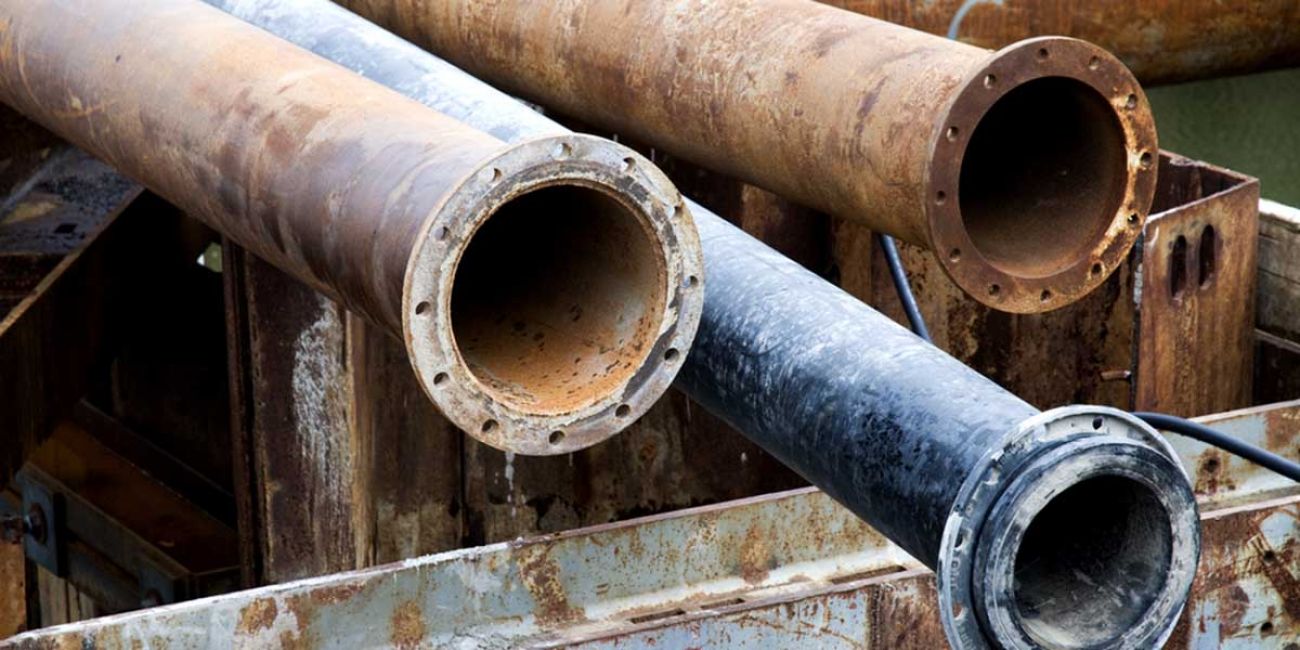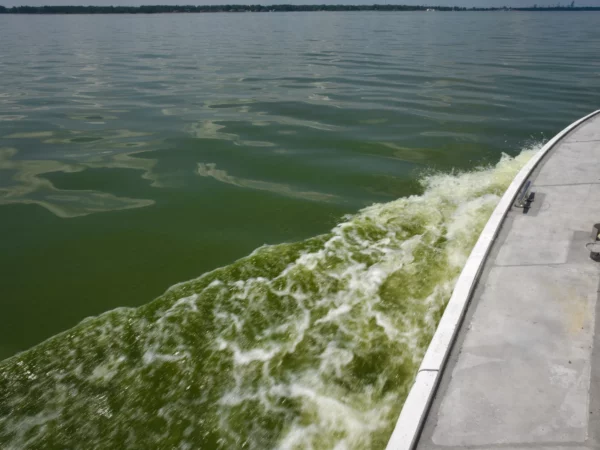
By Kelly House, Bridge Michigan
The Great Lakes News Collaborative includes Bridge Michigan; Circle of Blue; Great Lakes Now at Detroit Public Television; and Michigan Radio, Michigan’s NPR News Leader; who work together to bring audiences news and information about the impact of climate change, pollution, and aging infrastructure on the Great Lakes and drinking water. This independent journalism is supported by the Charles Stewart Mott Foundation. Find all the work HERE.
It looks like a public health success story.
Overall, the percentage of Michigan children with elevated blood lead levels has been falling for more than two decades, from nearly a third of children tested in 2000 to just 2.5 percent of children tested in 2020.
But those statewide gains — the result of bans on leaded paint, leaded gas and lead water delivery pipes, along with decades of work to remove existing lead from homes and neighborhoods — can be deceptively reassuring.
Lead levels falling but still high in some areas
For over two decades, the percentage of children under 6 who have elevated levels of lead in their blood has dropped dramatically in Michigan, mainly as a result of a ban on lead paint and the remediation of lead paint in older homes. In 2000, nearly a third of children under 6 who were tested had elevated lead level; the rate dropped to 2.5 percent in 2020. But children in a number of ZIP Codes in Michigan still suffer from the ravages of the metal which can impact learning and behavior. You can use this map to see the percent of children with elevated lead levels in your ZIP Code in 2020 and from 2016. To use the search function, put the name of the municipality, state and ZIP. For instance: “Detroit, MI 48204.”
*Note: In cases where there are between 1 and 5 children with elevated lead levels in a ZIP Code, the state suppresses the data for privacy reasons.
Source: Michigan Department of Health and Human Services
As the adjacent map illustrates, the toxic metal continues to inflict an uneven toll in Michigan, afflicting the residents of cities, from Detroit to Grand Rapids, at far higher rates than the state as a whole.
Illnesses associated with children’s exposure to the toxic metal, from learning problems to stunted growth, can be severe and permanent.
And while lead service lines in old cities’ drinking water systems are part of the problem, they’re far from the only culprit.
Paint flakes and dust are the leading sources of lead poisoning in children. And like lead water service lines that have drawn publicity in places like Flint and Benton Harbor, they’re more common in communities with lots of old houses built before the federal government banned lead paint in 1978.
Other prominent sources of lead contamination include soil tainted by industrial pollution or lingering contamination from the era of leaded gasoline, and some toys and jewelry.
“It’s important that we’re attending to all those sources of lead,” said Sarah Lyon-Callo, top epidemiologist for the Michigan Department of Health and Human Services.
The neighborhoods where more Michigan children have elevated lead levels are typically older communities where most homes were built before 1980 — and many before 1950, making them more likely to harbor lead paint and pipes.
And urban areas are disproportionately impacted by automobile exhaust and industrial pollution, both of which can elevate lead hazards. Leaded gasoline was banned in 1996.
Those realities also make lead, like many environmental hazards, a problem with an outsized impact on communities of color and poor communities.
Nationwide, Black children living below the federal poverty line face a far higher risk of lead exposure than their white and Hispanic counterparts in the same income bracket, part of a broader trend that researchers have blamed on housing discrimination, income disparities and other factors that have forced Black Americans to live closer to a host of environmental hazards.
Lyon-Callo said new funding that reached Michigan in 2017 has enabled the state to get more aggressive about removing lead hazards in homes.
The new funds address a common complaint about U.S. lead paint abatement efforts: Money Michigan has received from the U.S. Department of Housing and Urban Development since the 1990s to abate lead paint can only be spent after a child in the home shows elevated lead levels in their blood.
The new program has allowed crews to fix lead hazards in homes occupied by a Medicaid-eligible child or pregnant woman, without waiting for the poison to show up in a child’s blood.
“We can go in and get the lead out before a child becomes exposed, which is just, you know, very exciting from a public health perspective,” Lyon-Callo said.
But the funds don’t come close to covering every Michigan home that is likely laced with lead. Since 2017, the money has allowed crews to abate lead in 1,380 homes. There are more than 1 million homes in Michigan built before 1950, making them more likely to contain lead.
Lawmakers say Michigan needs more tools to fully address the threat of lead in Michigan. A bipartisan group of legislators has introduced a 10-bill package that aims to boost childhood lead screening in Michigan, require doctors to be trained to treat lead exposure, and require lead paint inspection when older homes are sold, among other provisions.
Rep. Rachel Hood, D-Grand Rapids, called lead paint “a silent threat” in Michigan communities.
“I don’t want to underestimate the importance of responding to lead in water pipes, because the state of Michigan is very vulnerable to poisoning kids with lead in water,” Hood said. “But the majority of kids in my community who are diagnosed with elevated blood levels are exposed as a result of lead paint.”
Meanwhile, lawmakers are debating whether to use hundreds of millions of COVID-19 relief dollars to help Michigan water providers get the lead pipes out of their drinking water systems.
It’s unclear when the funds could become available.
Bridge reporter Mike Wilkinson contributed to this report.
Catch more news on Great Lakes Now:
Why are so many Michigan water systems finding lead? They’re looking harder
In Benton Harbor, residents’ complaints of lead-tainted water carry echoes
Featured image: Lead service lines in old cities’ drinking water systems are far from the only culprit contributing to childhood lead exposure in Michigan. Paint flakes and dust are the leading sources of lead poisoning. (Bridge file photo)




